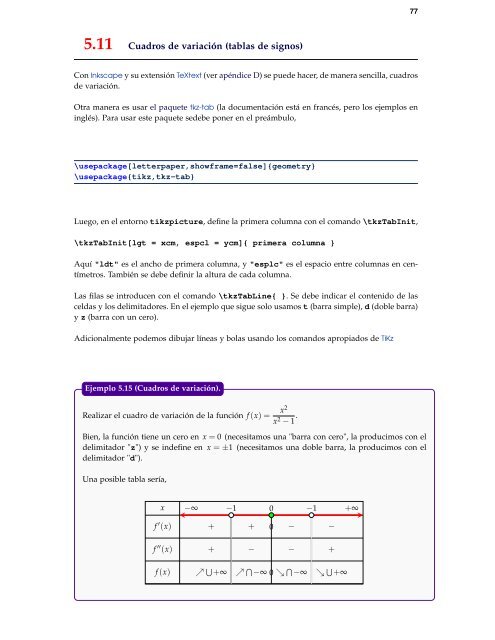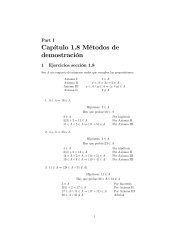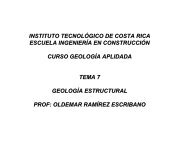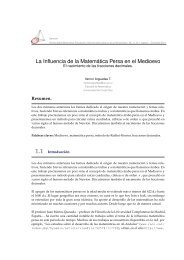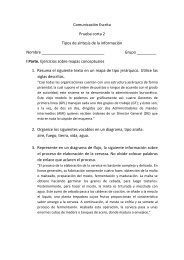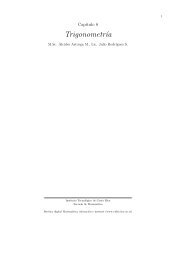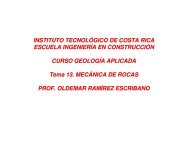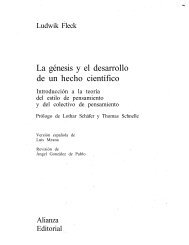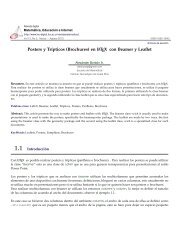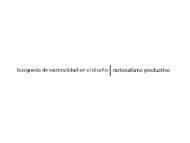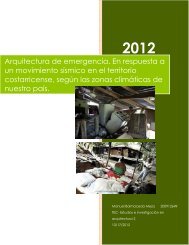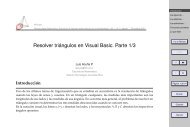Edición de textos científicos con LaTeX - TEC Digital - Tecnológico ...
Edición de textos científicos con LaTeX - TEC Digital - Tecnológico ...
Edición de textos científicos con LaTeX - TEC Digital - Tecnológico ...
You also want an ePaper? Increase the reach of your titles
YUMPU automatically turns print PDFs into web optimized ePapers that Google loves.
77<br />
5.11 Cuadros <strong>de</strong> variación (tablas <strong>de</strong> signos)<br />
Con Inkscape y su extensión TeXtext (ver apéndice D) se pue<strong>de</strong> hacer, <strong>de</strong> manera sencilla, cuadros<br />
<strong>de</strong> variación.<br />
Otra manera es usar el paquete tkz-tab (la documentación está en francés, pero los ejemplos en<br />
inglés). Para usar este paquete se<strong>de</strong>be poner en el preámbulo,<br />
\usepackage[letterpaper,showframe=false]{geometry}<br />
\usepackage{tikz,tkz-tab}<br />
Luego, en el entorno tikzpicture, <strong>de</strong>fine la primera columna <strong>con</strong> el comando \tkzTabInit,<br />
\tkzTabInit[lgt = xcm, espcl = ycm]{ primera columna }<br />
Aquí "ldt" es el ancho <strong>de</strong> primera columna, y "esplc" es el espacio entre columnas en centímetros.<br />
También se <strong>de</strong>be <strong>de</strong>finir la altura <strong>de</strong> cada columna.<br />
Las filas se introducen <strong>con</strong> el comando \tkzTabLine{ }. Se <strong>de</strong>be indicar el <strong>con</strong>tenido <strong>de</strong> las<br />
celdas y los <strong>de</strong>limitadores. En el ejemplo que sigue solo usamos t (barra simple), d (doble barra)<br />
y z (barra <strong>con</strong> un cero).<br />
Adicionalmente po<strong>de</strong>mos dibujar líneas y bolas usando los comandos apropiados <strong>de</strong> TiKz<br />
Ejemplo 5.15 (Cuadros <strong>de</strong> variación).<br />
Realizar el cuadro <strong>de</strong> variación <strong>de</strong> la función f (x) =<br />
x2<br />
x 2 − 1 .<br />
Bien, la función tiene un cero en x = 0 (necesitamos una "barra <strong>con</strong> cero", la producimos <strong>con</strong> el<br />
<strong>de</strong>limitador "z") y se in<strong>de</strong>fine en x = ±1 (necesitamos una doble barra, la producimos <strong>con</strong> el<br />
<strong>de</strong>limitador "d").<br />
Una posible tabla sería,<br />
x<br />
f ′ (x)<br />
f ′′ (x)<br />
f (x)<br />
−∞ −1 0 −1 +∞<br />
+ + 0 − −<br />
+ − − +<br />
↗ ⋃ +∞ ↗ ⋂ −∞ 0 ↘ ⋂ −∞ ↘ ⋃ +∞


